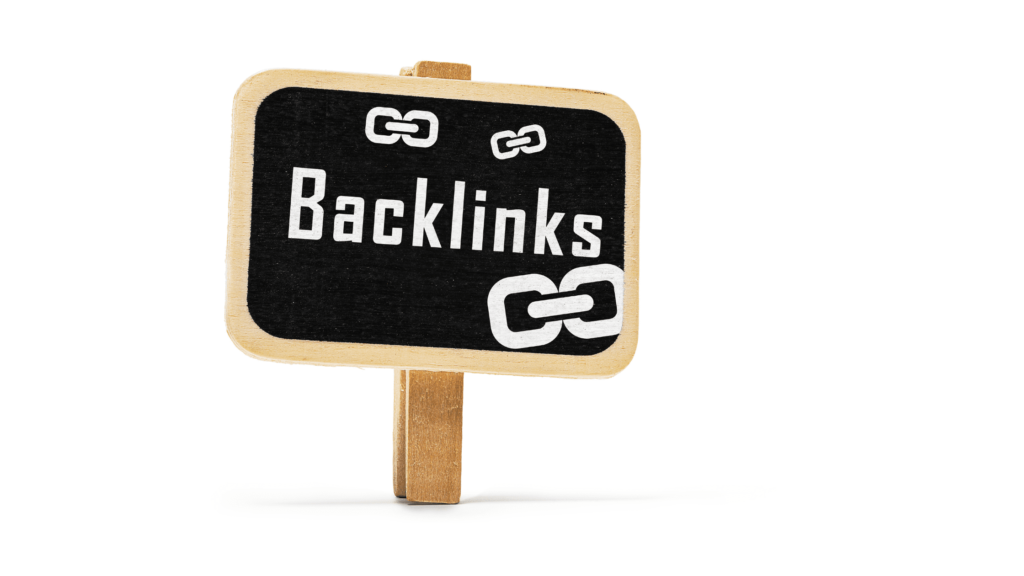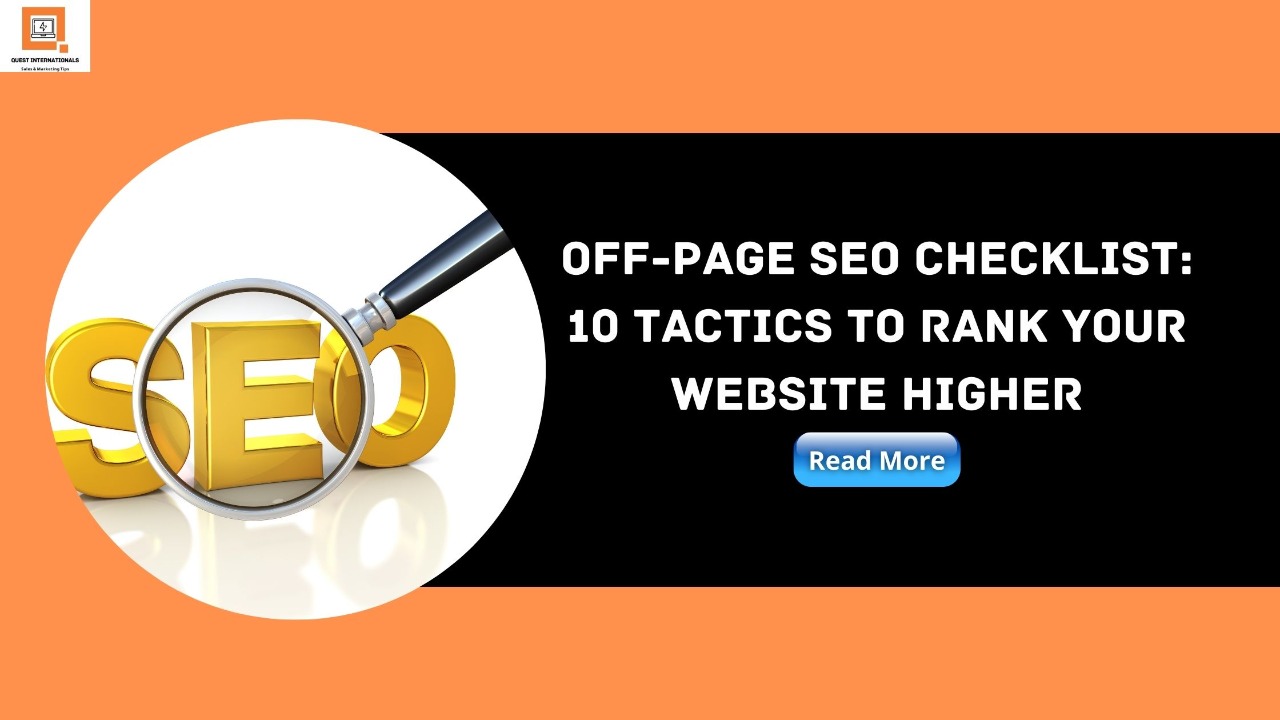Table of Contents
ToggleI’m a big proponent of on-page SEO. In fact, most people don’t even know that there’s an off-page SEO checklist aspect to their site’s success. But there is! And it can be just as important as getting top rankings for your keywords on Google and other search engines. Off-page SEO refers to any tactics you use outside of traditional SEO strategies like keyword research and content creation that will help improve your ranking in organic results that is, non-paid listings like those found at the top of search results pages (SERPs).
10 Tactics off-page SEO checklist To Make Your WordPress Site Rank Higher
Build quality backlinks.

off-page SEO checklist Backlinks are the most important ranking factor for your site, and they’re essential for making sure that your content is visible in Google’s results. Backlinks can be gained through social media shares, link exchanges, guest posts, or simply by mentioning other sites on your own website. If you don’t have any existing links pointing towards it yet (or if you want to build one), there are some strategies you can use to make sure that happens as quickly as possible:
- Write content about topics relevant to the industry or niche where you want people to go after reading about what it’s all about, then share it across different platforms such as Twitter or LinkedIn groups where people who may be interested in learning more could see it too! This will help spread awareness among potential customers who might otherwise not know what SEO actually means before seeing something like this posted somewhere else online.
Track and optimize for keywords.
For both paid and organic search, keyword search optimization is a crucial first step in search engine marketing. All of your subsequent efforts will be for naught if you choose your target keywords poorly. As a result, proper keyword optimization is essential.
Guest posts on reputable sites.
Guest posting is an excellent way to boost your site’s search engine rankings, and it should be part of any SEO strategy.
A guest post is a piece written by someone other than you on another website that has relevant content for your audience. You can create a guest post by finding a topic (or meta tag), writing and publishing it on another blog, then linking back to your own website in the introduction of the piece so Google knows where they have found it.
Guest posts are also important for two other reasons: firstly, they help build authority for your brand; secondly, if someone leaves their email address at the bottom of their article then there’s an opportunity for them to receive more emails from you over time as well as potentially being contacted by potential clients who see their work published online
Perform competitor research.
The first step in the off-page SEO checklist is to understand your competitors. You should know what keywords they rank for and how they are ranking them. By understanding their content marketing strategy, backlink profile, and social media strategy, you can get a better idea of what content they’re producing that may be relevant to yours.
To find out more about any given competitor’s site or products, perform some basic on-page analysis:
Get active on social media.
Social media is a great way to share your content, engage with your audience and build relationships with influencers. It’s also an effective way to find new customers and employees.
- Share good stuff on social media: If you have something interesting or useful to share, then it’s important that you get active on social media so people can find out about what they’re missing out on!
- Connect with influencers: If there are people already talking about the niche topic (for example, if there are tons of bloggers writing about WordPress), use these bloggers as connectors between brands and their target audience by contacting them directly via email or Twitter DM (direct message). This will help increase awareness of your brand while also increasing trust among potential customers who see that someone else has already reached out to them before even reaching out to themselves.
Create sharable content.
In the media and marketing environment of today, only the greatest material that truly merits sharing will be disseminate. It’s up to you to develop material that people will naturally want to share, with or without the aid of an algorithm, as the networks themselves have made it obvious they’re done doing anyone else any favors on this front. Here are the best tips:
- Use social media to promote your content.
- Use images and videos to tell your story.
- Use a catchy title to get people to read your content.
- Use a call-to-action (CTA) in the form of an offer or benefit that entices readers, such as “Click Here To Learn More About This Product” or “Download Our Free eBook Today!”
Monitor your backlink profile.
Monitoring your backlink profile is a crucial part of off-page SEO. You can use tools like Google Search Console, Ahrefs, and Majestic to monitor your site’s backlink profile.
If you’re already using these tools in combination with each other, then you should also be looking at the results when they’re combine together (i.e., in one report).
Use social sharing buttons on your website.
Social sharing buttons are the best way to encourage your readers to share your content on social media platforms. They can be used as part of the header, or place within the post itself.
- Make sure that you have a prominent social sharing button in your header that links directly back to your website and includes some sort of call-to-action (CTA) like “share” or “like” so people know what they need to do when clicking on it.
- Include both Facebook and Twitter buttons at least once per post so users don’t feel like they’re missing out on something if there’s only one type available!
- Choose which social media platform(s) should appear in which places based on how relevant those platforms are for each blog post topic; this means choosing between different platforms based upon their functionality rather than simply going after all three services because they’re all free (which isn’t necessarily bad).
Monitor brand mentions across the web.
Monitoring online conversations about your brand has a lot of potential benefits. Monitoring brand mentions can provide candid feedback, unbiased insight, possibilities for reputation management, and a better knowledge of how people interact with your company’s goods or services. Here are the best tips to Monitor your brand
- Monitor brand mentions on social media.
- Monitor brand mentions on review sites and forums.
- Monitor brand mentions in blogs, news sites, and social networks.
Generate buzz with content marketing.
Content marketing is the best way to generate buzz. A well-written blog post, video, or eBook can generate more traffic than any other type of marketing tool.
Content marketing is a method of marketing that involves creating and distributing valuable, relevant, consistent content to attract and retain a clearly defined audience – with the objective of driving profitable customer action (i.e., leads).
Off-page SEO is all about building your credibility.
It’s a way of getting more links to your website and increasing its authority, which will help it rank higher in search engines like Google. The best way to do this is by creating an effective content marketing strategy that generates new leads and builds trust with potential customers so they can find you online when they need what you have to offer them.
Want To Learn More About Online Marketing Techniques?
Upgrade your professional skills in Digital Marketing and Social Media Marketing Via a Master classes and Training.
Limited Seat’s Available




